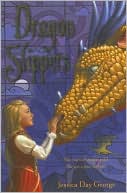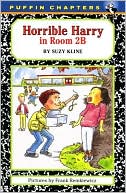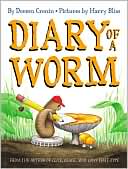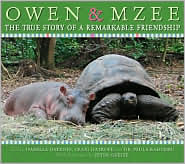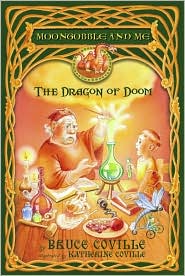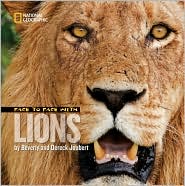I just love this word. It says that what one might think just isn't true. It prepares the reader for a sentence to come, a sentence that might not match what you are expecting.
For my fourth graders, though, this word is one that they often skip. They haven't read much academic text, and they don't have a sense of the power of the word "however." They can miss a great deal of missing for want of a simple word.
So I like to find occasions to use it and highlight its meanings. Thursday was my chance. On the morning message, I wrote:
We are supposed to have music today. However, instead of music, we'll have PE.
After we read this part of the chart, we talked about the word and what it means. Then students went around with their own "however" constructions. (I steered them toward talking about younger siblings or cousins.) Here were some that they came up with:
-My little sister looks cute. However, she bites and kicks.
-Everyone says my cousin is adorable. However, he can be mean sometimes.
-My little brother looks quiet. However, he can wreck my room in five minutes.
We all practiced saying however together, and pausing for the comma. Our next step will be to see how "however" works its way into student writing. Often, students make some small mistakes as they try to write with it--using it in run-on sentences, using it for situations where it doesn't fit. However, with time and continued practice, this word will work its way into their writing and their reading.
Continuing on with a great year! However, judging from their comments in class, I'm a little nervous about upcoming siblings...
Friday, September 30, 2011
Friday, September 23, 2011
Independent Reading Triage
Even though the general tone in my reading class has settled into quiet reading, there are still problems that I need to deal with. My time is limited, so I have to triage. Right now, there are three main sets of readers that I am looking at: the quiet readers, the information book readers, and the "flitters".
Quiet readers
In every class, there are some students who just seem to love reading. They have their books every day, sit quietly, and never misbehave during independent reading time. So, what's the problem? There are some of these readers who are not building a cohesive mental model of the text. That is, they read a page, and may understand some parts, but they are not really understanding the narrative from beginning to end. A book like Dragon Slippers is one that these readers are often drawn toward. There are entertaining bits on each page...but a struggling reader might not be able to put these entertaining bits together into a whole story.
These readers do not announce themselves. In fact, they are sometimes hard to spot. After all, they love books! But I need to find them and work with them. In order to do this, I try to check in with 3-4 of the quiet readers each day. These are brief, chatty talks in which we talk about the book. Over the course of several days, I can usually figure out if the readers are building a big picture of the book, or just going image to image. Then, on the next library day, I try to make sure that we browse together to find a book that has a nice, easy to understand storyline. Kids who are drawn to complex fantasy books that they can't yet totally understand will often enjoy reading The Secrets of Droon or The Spiderwick Chronicles. Both of these have a single storyline that readers can easily comprehend.
Information book readers
I have several students who lug around books filled with information. I've talked with them, and I'm satisfied that they are doing a decent job of understanding one paragraph at a time. But I want to get them to be able to find success in a chapter book. As fourth graders, they need to be able to follow a story over multiple pages.
These readers often need a lot of support. Today, I sat down and read the first chapter of a Horrible Harry book with a student who said that he didn't like chapter books. I read a paragraph, he read a paragraph. Then we talked about what happened. I glanced ahead a few pages and gave him a goal for reading. "In the next part of the chapter, you're going to learn about stub people. I want you to find out who the stub people are." Because he's not quite at the stage of finding a whole story interesting, I had to give him a tangible goal to get him through the next two pages.
While he read, I did two quick check-ins, and then came back. "Who are the stub people?" I asked. We talked about it. It was the end of reading time then, and time to get on with the lesson, so I told him, "Let's keep that book in a safe place. Next time, we'll read together again." Keeping these kids engaged in a book requires a lot of close interaction. They're used to a new topic on every page, and the slowly unfolding nature of a narrative seems dull to them at first.
I like the Horrible Harry series a great deal for these students, because it is so funny and easy to understand. Dan Gutman's My Weird School series also works well for these reluctant readers.
"Flitters"
Flit, flit, flit. Every time I turn my head, it seems that these readers are up. "I finished this book," or, "I didn't like it," or "It was boring."
These readers require a different approach. Unlike the information book readers, they haven't yet shown much engagement in any text. So I like to use picture books to help them. Last time, I wrote about how much my students enjoyed the Diary of a Worm books. But I have to be careful with the picture books. On the one hand, picture books are great, with their interesting plots and lush artwork. On the other hand, I want kids to choose picture books, not just read them because they don't know how to read other books.
So I push kids toward deeper picture books, like fairy tale retellings and historical fiction. I happened to pick up Anansi's Party Time on sale last year, and it's been making the rounds in my classroom this fall. This is a fairly easy text, but as a trickster tale it can become a good background knowledge book for kids. Later in the year, when we talk about genre, I can pull this off the shelf and kids can say, "I've read that!"
I also like to keep a good selection of books that are similar in topic or plot. For example, I've acquired three different versions of The Twelve Dancing Princesses. Reluctant readers often like to read each version and then talk to me about which they liked best and why.
Independent reading time is always a challenge. But I love being able to use this 15 minutes every day to help students discover the world of books. By thinking carefully about my readers, I can make sure that this time is used well.
Quiet readers
In every class, there are some students who just seem to love reading. They have their books every day, sit quietly, and never misbehave during independent reading time. So, what's the problem? There are some of these readers who are not building a cohesive mental model of the text. That is, they read a page, and may understand some parts, but they are not really understanding the narrative from beginning to end. A book like Dragon Slippers is one that these readers are often drawn toward. There are entertaining bits on each page...but a struggling reader might not be able to put these entertaining bits together into a whole story.
These readers do not announce themselves. In fact, they are sometimes hard to spot. After all, they love books! But I need to find them and work with them. In order to do this, I try to check in with 3-4 of the quiet readers each day. These are brief, chatty talks in which we talk about the book. Over the course of several days, I can usually figure out if the readers are building a big picture of the book, or just going image to image. Then, on the next library day, I try to make sure that we browse together to find a book that has a nice, easy to understand storyline. Kids who are drawn to complex fantasy books that they can't yet totally understand will often enjoy reading The Secrets of Droon or The Spiderwick Chronicles. Both of these have a single storyline that readers can easily comprehend.
Information book readers
I have several students who lug around books filled with information. I've talked with them, and I'm satisfied that they are doing a decent job of understanding one paragraph at a time. But I want to get them to be able to find success in a chapter book. As fourth graders, they need to be able to follow a story over multiple pages.
These readers often need a lot of support. Today, I sat down and read the first chapter of a Horrible Harry book with a student who said that he didn't like chapter books. I read a paragraph, he read a paragraph. Then we talked about what happened. I glanced ahead a few pages and gave him a goal for reading. "In the next part of the chapter, you're going to learn about stub people. I want you to find out who the stub people are." Because he's not quite at the stage of finding a whole story interesting, I had to give him a tangible goal to get him through the next two pages.
While he read, I did two quick check-ins, and then came back. "Who are the stub people?" I asked. We talked about it. It was the end of reading time then, and time to get on with the lesson, so I told him, "Let's keep that book in a safe place. Next time, we'll read together again." Keeping these kids engaged in a book requires a lot of close interaction. They're used to a new topic on every page, and the slowly unfolding nature of a narrative seems dull to them at first.
I like the Horrible Harry series a great deal for these students, because it is so funny and easy to understand. Dan Gutman's My Weird School series also works well for these reluctant readers.
"Flitters"
Flit, flit, flit. Every time I turn my head, it seems that these readers are up. "I finished this book," or, "I didn't like it," or "It was boring."
These readers require a different approach. Unlike the information book readers, they haven't yet shown much engagement in any text. So I like to use picture books to help them. Last time, I wrote about how much my students enjoyed the Diary of a Worm books. But I have to be careful with the picture books. On the one hand, picture books are great, with their interesting plots and lush artwork. On the other hand, I want kids to choose picture books, not just read them because they don't know how to read other books.
So I push kids toward deeper picture books, like fairy tale retellings and historical fiction. I happened to pick up Anansi's Party Time on sale last year, and it's been making the rounds in my classroom this fall. This is a fairly easy text, but as a trickster tale it can become a good background knowledge book for kids. Later in the year, when we talk about genre, I can pull this off the shelf and kids can say, "I've read that!"
I also like to keep a good selection of books that are similar in topic or plot. For example, I've acquired three different versions of The Twelve Dancing Princesses. Reluctant readers often like to read each version and then talk to me about which they liked best and why.
Independent reading time is always a challenge. But I love being able to use this 15 minutes every day to help students discover the world of books. By thinking carefully about my readers, I can make sure that this time is used well.
Saturday, September 17, 2011
Independent Reading: From Chaos to Contentment
I think that providing time for independent reading is one of the most important things that a classroom teacher can do. This is time for students to learn about new genres, time for them to apply the strategies they learn in the classroom, time for them to develop background knowledge on a variety of topics.
It can also be a time to drive a teacher crazy. :)
I've learned that I need to embrace the chaos in the first few weeks, and to work tirelessly to get everything settled. Here is how the first three weeks usually end up.
Week 1: Any book will do
At the start, as I'm watching kids, I let them choose any books from the shelves. I have a good collection of the fun pop-up books, including Pirateology and Egyptology, that even reluctant readers like to peruse. I also have almanacs, guides to superhero toys like Bionicle, and world record books. While kids select these books, I watch their choices and take note of what they like to read. I also spend this time at the bookshelves trying to match kids to books.
Week 2: Let's be more selective
In the second week, I start to encourage kids to move away from the glitzy fun books and into books that have more substance. The pop-up books get put aside for use during homeroom and bus time. Books like Diary of a Worm are immeasurably helpful during this time. Diary of a Worm is very appealing to reluctant fourth grade readers, yet still has a connected storyline. Diary of a Fly and Diary of a Spider are also very popular.
I like to gather books that I think will be good matches to the class and put them in a crate at the front of the room. This helps to spread out the browsers, as well as steer kids toward good books. I also keep small boxes of the books that are popular with beginning of the year fourth graders, like Magic Treehouse, Horrible Harry, and A-Z Mysteries.
This is the time to tread very lightly, however. There are some kids who feel that they cannot read, and will do anything to keep this a secret--from me and from the rest of the class. These kids are often flitting back and forth to the basket where I keep my high-interest books. Sometimes they just pick up a book and look at the pictures. These kids need more support to make independent reading beneficial.
Week 3: Formal recordkeeping begins!
By Week 3, the classroom has settled enough so that I no longer have to be on my feet during the entire independent reading time. I use this time to start writing down what I notice and spending longer periods of time per kid. I have a page for each student in a binder, and I write down very quick notes about what I see and what we talk about.
My interactions are different for different students. With one student, I spent about 5 minutes partner reading Tornado Alert. He had been trying to read the more difficult Lightning by Seymour Simon. I steered him toward Tornado Alert, and we read together, sharing our thoughts aloud on each page and talking about the storm of the previous evening. (I am such a huge fan of Franklyn M. Branley's writing--he makes even difficult science ideas easy to understand. His books are easy to find at used book sales and make great additions to the classroom library.)
On the other side of the room, I listened to a student read parts of Fudge-A-Mania aloud, taking a quick Running Record on the page that I have for her in my binder and talking with her about what was happening. Next to her, I helped another student find a book similar to Owen and Mzee, as we talked about why she liked animal nonfiction so much.
In this week I noticed that there were several students who were still flitting from book to book. I decided to address this during guided reading time. With my group of 10 kids (I know--10 is a huge guided reading group! Don't get me started), I started reading Moongobble and Me, a very engaging, supportive chapter book. I like this book because it has a page with pictures of every character, but still gives a bit of challenge. Working together, I'm trying to show students how a chapter book unfolds slowly, and how a reader needs to put the pieces together throughout the text to make meaning from the book.
On Friday, we talked about multiple referents. I realized that the students didn't realize that the old man, the magician, and Moongobble were all the same person. We talked about how we could figure this out and why it's important to know this. By working on these topics in guided reading, I'm giving readers what they need to make better choices in independent reading time. (There's a chapter about multiple referents in The Forest and the Trees if you'd like more information.)
Week 4:????
Next week is our fourth week. I'm hoping that it will bring even more contentment to our independent reading time. I'm going to try to move the Diary of a Worm contingent to some longer, more connected texts, as well as check in with some of the students who have been reading their own books from the start. One thing that I've learned is that every group of students is different, and every year unfolds in a different way. But I do know that sticking with time for independent reading yields great rewards.
It can also be a time to drive a teacher crazy. :)
I've learned that I need to embrace the chaos in the first few weeks, and to work tirelessly to get everything settled. Here is how the first three weeks usually end up.
Week 1: Any book will do
At the start, as I'm watching kids, I let them choose any books from the shelves. I have a good collection of the fun pop-up books, including Pirateology and Egyptology, that even reluctant readers like to peruse. I also have almanacs, guides to superhero toys like Bionicle, and world record books. While kids select these books, I watch their choices and take note of what they like to read. I also spend this time at the bookshelves trying to match kids to books.
Week 2: Let's be more selective
In the second week, I start to encourage kids to move away from the glitzy fun books and into books that have more substance. The pop-up books get put aside for use during homeroom and bus time. Books like Diary of a Worm are immeasurably helpful during this time. Diary of a Worm is very appealing to reluctant fourth grade readers, yet still has a connected storyline. Diary of a Fly and Diary of a Spider are also very popular.
I like to gather books that I think will be good matches to the class and put them in a crate at the front of the room. This helps to spread out the browsers, as well as steer kids toward good books. I also keep small boxes of the books that are popular with beginning of the year fourth graders, like Magic Treehouse, Horrible Harry, and A-Z Mysteries.
This is the time to tread very lightly, however. There are some kids who feel that they cannot read, and will do anything to keep this a secret--from me and from the rest of the class. These kids are often flitting back and forth to the basket where I keep my high-interest books. Sometimes they just pick up a book and look at the pictures. These kids need more support to make independent reading beneficial.
Week 3: Formal recordkeeping begins!
By Week 3, the classroom has settled enough so that I no longer have to be on my feet during the entire independent reading time. I use this time to start writing down what I notice and spending longer periods of time per kid. I have a page for each student in a binder, and I write down very quick notes about what I see and what we talk about.
My interactions are different for different students. With one student, I spent about 5 minutes partner reading Tornado Alert. He had been trying to read the more difficult Lightning by Seymour Simon. I steered him toward Tornado Alert, and we read together, sharing our thoughts aloud on each page and talking about the storm of the previous evening. (I am such a huge fan of Franklyn M. Branley's writing--he makes even difficult science ideas easy to understand. His books are easy to find at used book sales and make great additions to the classroom library.)
On the other side of the room, I listened to a student read parts of Fudge-A-Mania aloud, taking a quick Running Record on the page that I have for her in my binder and talking with her about what was happening. Next to her, I helped another student find a book similar to Owen and Mzee, as we talked about why she liked animal nonfiction so much.
In this week I noticed that there were several students who were still flitting from book to book. I decided to address this during guided reading time. With my group of 10 kids (I know--10 is a huge guided reading group! Don't get me started), I started reading Moongobble and Me, a very engaging, supportive chapter book. I like this book because it has a page with pictures of every character, but still gives a bit of challenge. Working together, I'm trying to show students how a chapter book unfolds slowly, and how a reader needs to put the pieces together throughout the text to make meaning from the book.
On Friday, we talked about multiple referents. I realized that the students didn't realize that the old man, the magician, and Moongobble were all the same person. We talked about how we could figure this out and why it's important to know this. By working on these topics in guided reading, I'm giving readers what they need to make better choices in independent reading time. (There's a chapter about multiple referents in The Forest and the Trees if you'd like more information.)
Week 4:????
Next week is our fourth week. I'm hoping that it will bring even more contentment to our independent reading time. I'm going to try to move the Diary of a Worm contingent to some longer, more connected texts, as well as check in with some of the students who have been reading their own books from the start. One thing that I've learned is that every group of students is different, and every year unfolds in a different way. But I do know that sticking with time for independent reading yields great rewards.
Saturday, September 10, 2011
September Read-Alouds
Well, this September has not been so hot as 2009--although we could have done with less rain! Even though it's been relatively cool, choosing read-alouds for September is always an important task. I want to choose books that are engaging, books that are quick to show their gifts of enjoyment and pleasure. This isn't the time for the subtle and slow books. I have about 15 books behind my desk, all great candidates...but when it comes for the actual read aloud, I think and re-think about my choices. Here are the ones that worked out wonderfully!
Face to Face with Lions
by Derek Joubert and Beverly Joubert
I chose this book to use for modeling thinking about text. The opening section is a gripping personal narrative about an encounter with lions. (I admit that I left out the "mating lions" part as I read it aloud. It worked fine without it.) It was a great choice for this purpose. The text is exciting nonfiction, and it gave us many opportunities for questioning, predicting, and connecting. I also had the opportunity to talk with my reluctant readers about thinking about what's in the text, instead of just looking at the pictures.
Toys Go Out
Emily Jenkins
This book is a gentle story about toys. I love the way that readers are pulled right into the story, wondering along with the toys where they might be going. The writing style is lyrical and rolls right off the tongue, with just enough silliness to keep readers listening. My readers figured that the toys were going to school, which gave us a chance to talk about making inferences and understanding text clues. In the next chapter, the character "Plastic" tries to figure out what she is. The answer is on the cover of the book, but most of my students didn't notice this until the solution is revealed. Then we were able to go back and trace through the clues that added up to Plastic's identity. (I read this aloud to my own two boys--12 and 6--over the summer, and they both listened eagerly and asked me to keep going!)
Dr. Xargle's Book of Earthlets
by Jeanne Willis
Get this if you can! It's not currently available to buy new, but it's probably at a local library. I used this one to help students to understand the rubric for the trait of ideas. One of the characteristics of a 6 on the rubric is that the piece of writing helps you think about things in a new way, and goes beyond "common knowledge". Well, the idea of common knowledge is tough for fourth graders. This book was a great tool to use. We talked about babies and what they already know. Then we read this book, which is written from the perspective of an alien professor. Even though we knew a great deal about babies ("I know way too much, especially about diapers," moaned one fourth grader), the details in this book were still fresh and interesting.
Face to Face with Lions
by Derek Joubert and Beverly Joubert
I chose this book to use for modeling thinking about text. The opening section is a gripping personal narrative about an encounter with lions. (I admit that I left out the "mating lions" part as I read it aloud. It worked fine without it.) It was a great choice for this purpose. The text is exciting nonfiction, and it gave us many opportunities for questioning, predicting, and connecting. I also had the opportunity to talk with my reluctant readers about thinking about what's in the text, instead of just looking at the pictures.
Toys Go Out
Emily Jenkins
This book is a gentle story about toys. I love the way that readers are pulled right into the story, wondering along with the toys where they might be going. The writing style is lyrical and rolls right off the tongue, with just enough silliness to keep readers listening. My readers figured that the toys were going to school, which gave us a chance to talk about making inferences and understanding text clues. In the next chapter, the character "Plastic" tries to figure out what she is. The answer is on the cover of the book, but most of my students didn't notice this until the solution is revealed. Then we were able to go back and trace through the clues that added up to Plastic's identity. (I read this aloud to my own two boys--12 and 6--over the summer, and they both listened eagerly and asked me to keep going!)
Dr. Xargle's Book of Earthlets
by Jeanne Willis
Get this if you can! It's not currently available to buy new, but it's probably at a local library. I used this one to help students to understand the rubric for the trait of ideas. One of the characteristics of a 6 on the rubric is that the piece of writing helps you think about things in a new way, and goes beyond "common knowledge". Well, the idea of common knowledge is tough for fourth graders. This book was a great tool to use. We talked about babies and what they already know. Then we read this book, which is written from the perspective of an alien professor. Even though we knew a great deal about babies ("I know way too much, especially about diapers," moaned one fourth grader), the details in this book were still fresh and interesting.
Saturday, September 3, 2011
The Year Begins!
Well, that was tiring. Three days down, a whole bunch more to go!
The beginning of a new year is exhausting and exhilarating all at once. It's exhausting because, in those first few days, I have to teach so many routines and procedures. It's exhilarating because we are making something completely new--a class of individuals that has never existed before. It's so neat to watch it unfold. Already we have our first class jokes and shared annoyances. (Joke: The closets go to another dimension after homeroom, so you can't get anything from your backpack during the rest of the morning. Shared annoyance: The pencils that won't sharpen evenly.)
We had fun going on a world tour (remember, my tables are continents) and learning how to track hurricanes. I consciously tried to make those first few days content-rich, with lots of detailed pictures and real-time data. Each day at 11 am we've enjoyed looking at the updated information from the Hurricane Tracker.
I've been trying to get everything situated for the new year. This weekend, I've found some items that I started working on last year, formatted and tweaked them, and posted them to share.
Revising and Editing Checklists: This is a collection of checklists and activities for making clear the differences between revising and editing. Four sets of checklists (perfect for copying back to back), some editing practice, a list of revising strategies, and a revising activity. ($2)
Nouns and Word Choice: I'm trying to tie grammar instruction to the 6 Traits. This one shows how nouns can help with specific word choice. (Free)
Beginning of Year Lesson Plans for Reading: This explains how to begin your reading class and set up reading journals--5 days of lesson plans, blackline masters for the reading journal, and a fun get-acquainted activity. (The get-acquainted activity is in the free preview, so feel free to download it and use it!) Last year, this reading journal worked so well and we're already off to an impressive start this year. It's so nice to have those first few days figured out and taken care of. ($3)
I'm also teaching social studies for the first time...how exciting!
The beginning of a new year is exhausting and exhilarating all at once. It's exhausting because, in those first few days, I have to teach so many routines and procedures. It's exhilarating because we are making something completely new--a class of individuals that has never existed before. It's so neat to watch it unfold. Already we have our first class jokes and shared annoyances. (Joke: The closets go to another dimension after homeroom, so you can't get anything from your backpack during the rest of the morning. Shared annoyance: The pencils that won't sharpen evenly.)
We had fun going on a world tour (remember, my tables are continents) and learning how to track hurricanes. I consciously tried to make those first few days content-rich, with lots of detailed pictures and real-time data. Each day at 11 am we've enjoyed looking at the updated information from the Hurricane Tracker.
I've been trying to get everything situated for the new year. This weekend, I've found some items that I started working on last year, formatted and tweaked them, and posted them to share.
Revising and Editing Checklists: This is a collection of checklists and activities for making clear the differences between revising and editing. Four sets of checklists (perfect for copying back to back), some editing practice, a list of revising strategies, and a revising activity. ($2)
Nouns and Word Choice: I'm trying to tie grammar instruction to the 6 Traits. This one shows how nouns can help with specific word choice. (Free)
Beginning of Year Lesson Plans for Reading: This explains how to begin your reading class and set up reading journals--5 days of lesson plans, blackline masters for the reading journal, and a fun get-acquainted activity. (The get-acquainted activity is in the free preview, so feel free to download it and use it!) Last year, this reading journal worked so well and we're already off to an impressive start this year. It's so nice to have those first few days figured out and taken care of. ($3)
I'm also teaching social studies for the first time...how exciting!
Subscribe to:
Posts (Atom)

